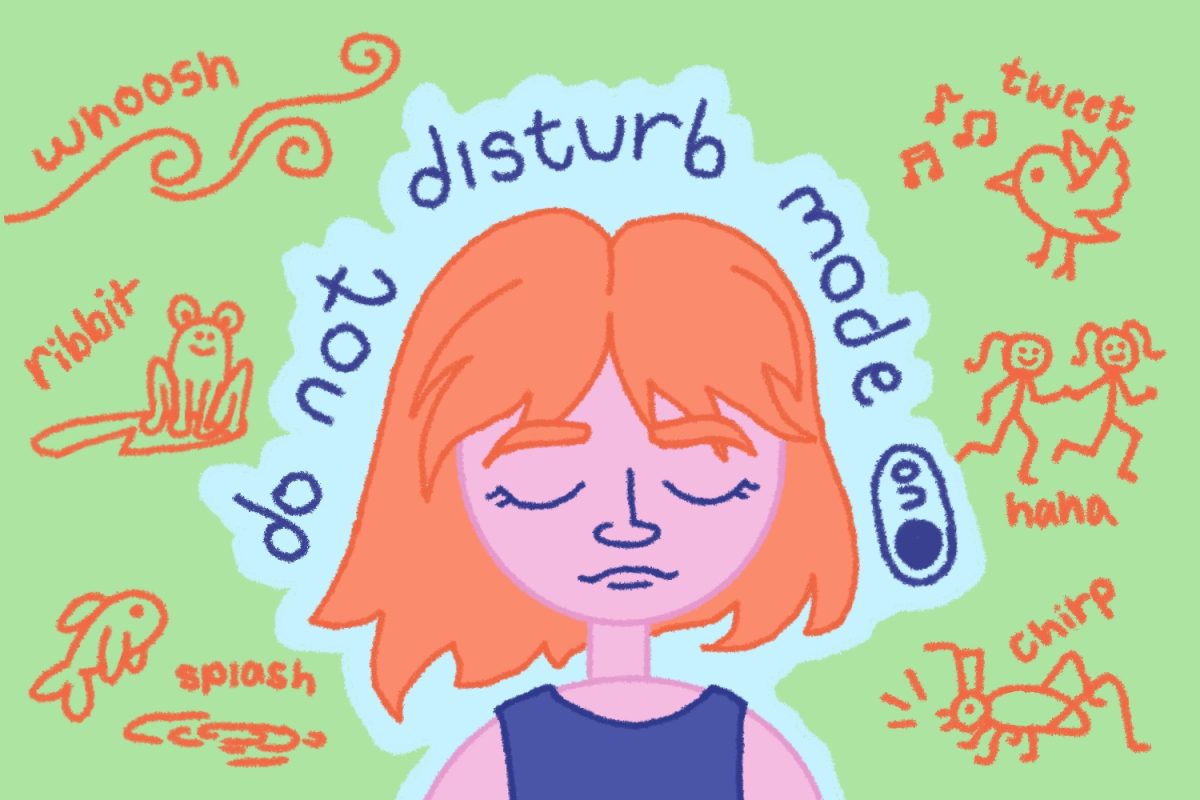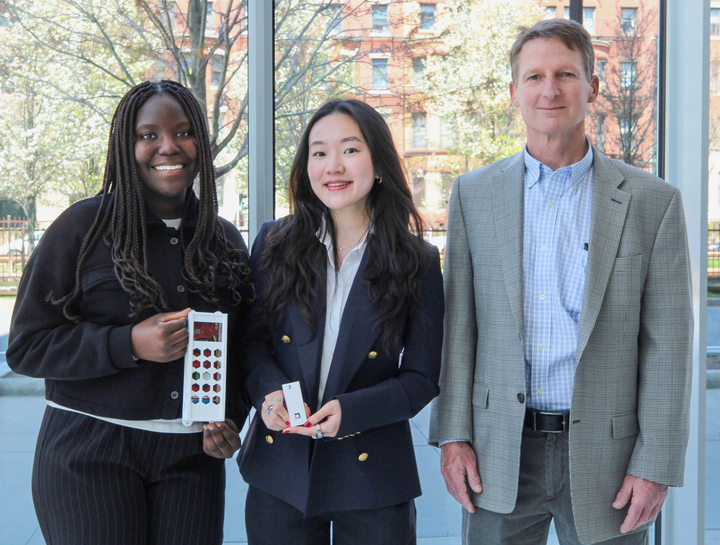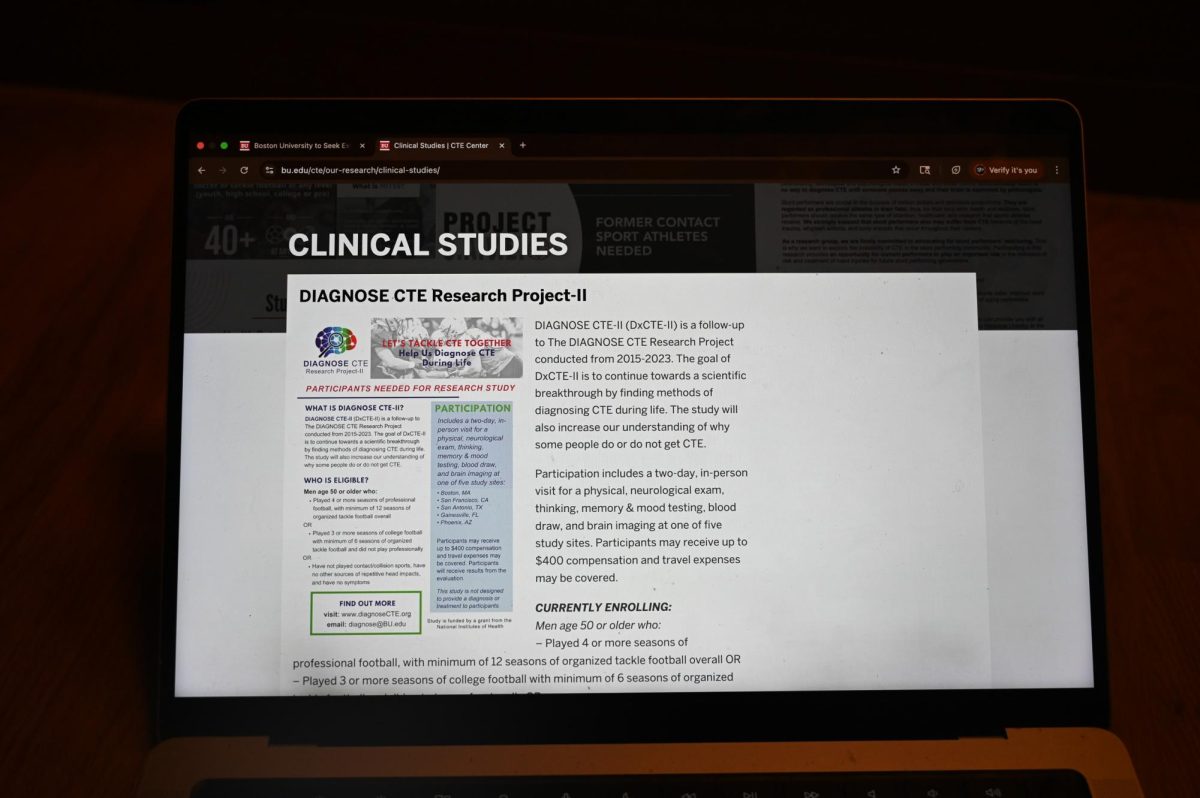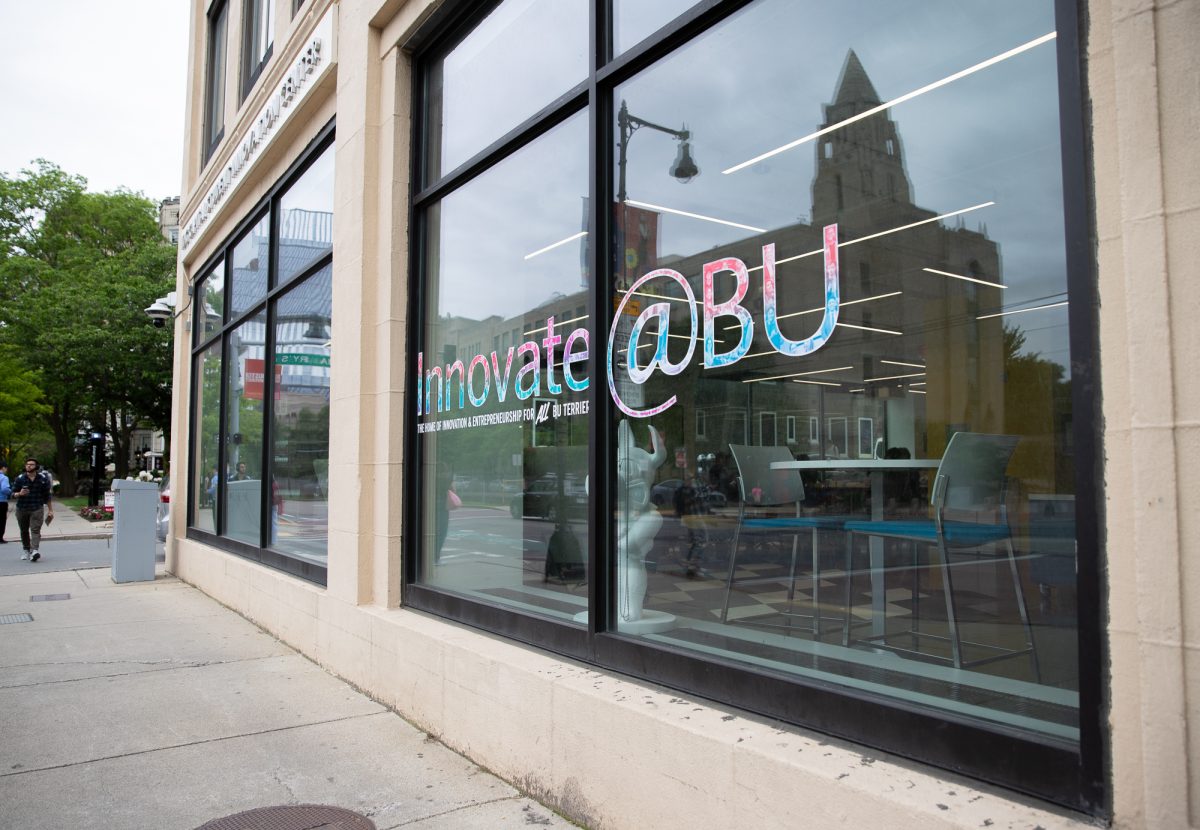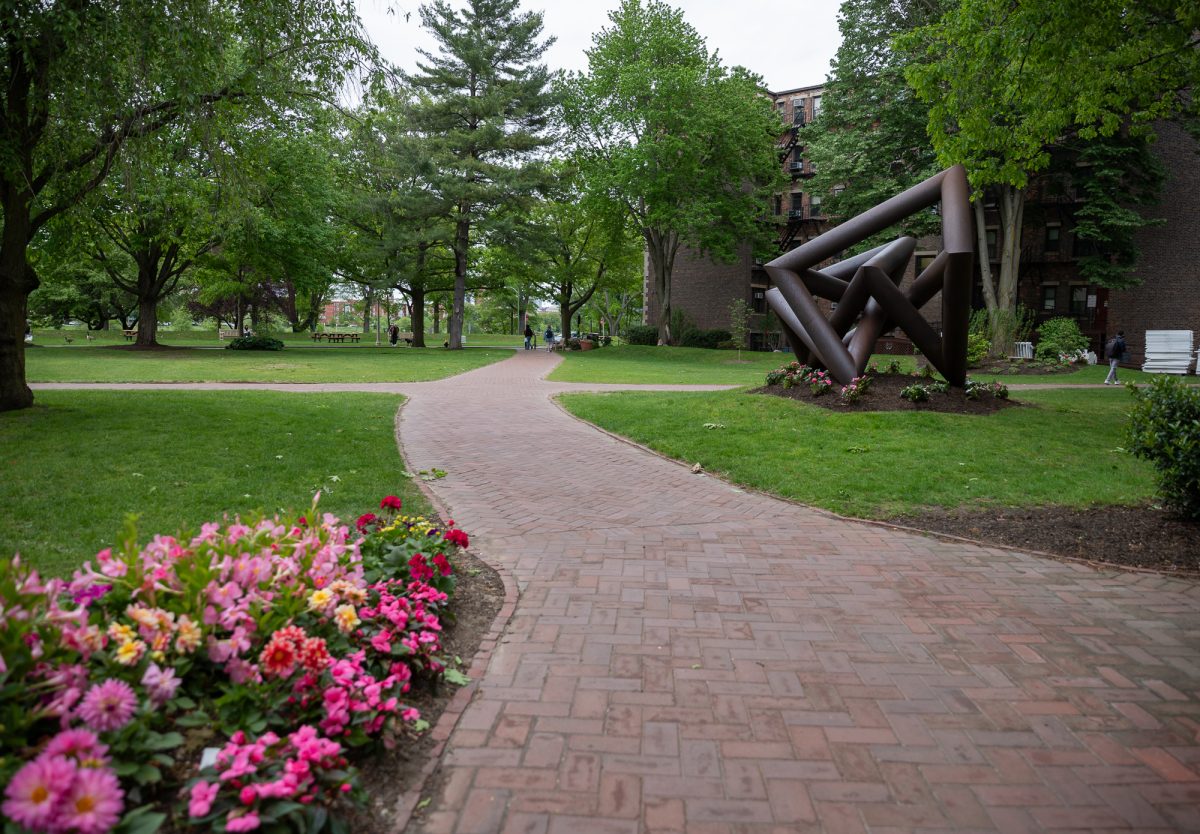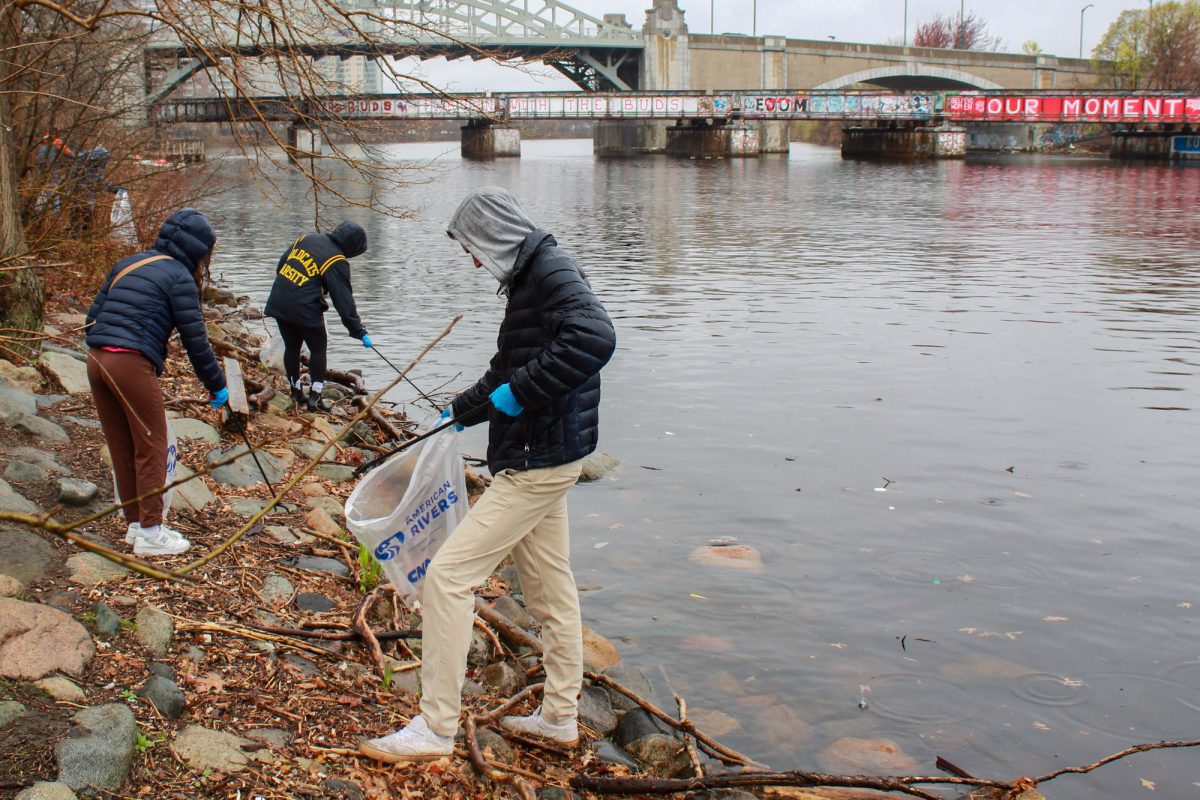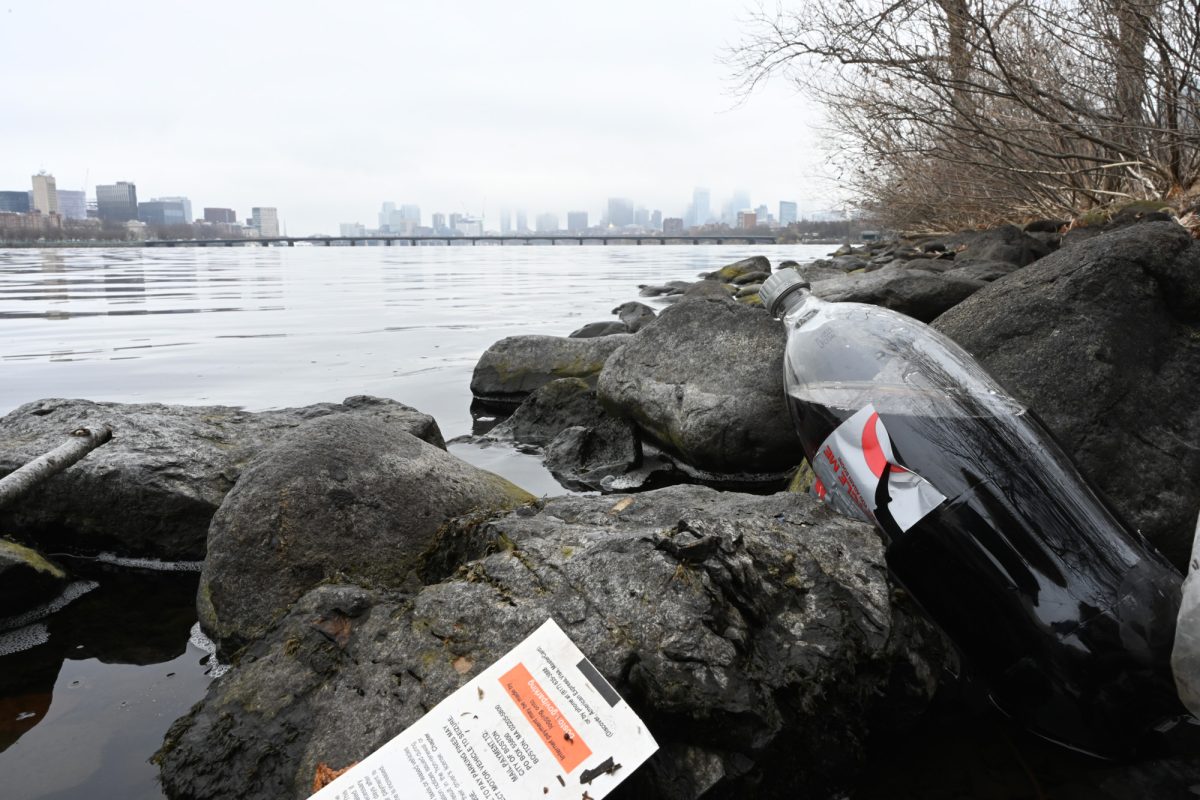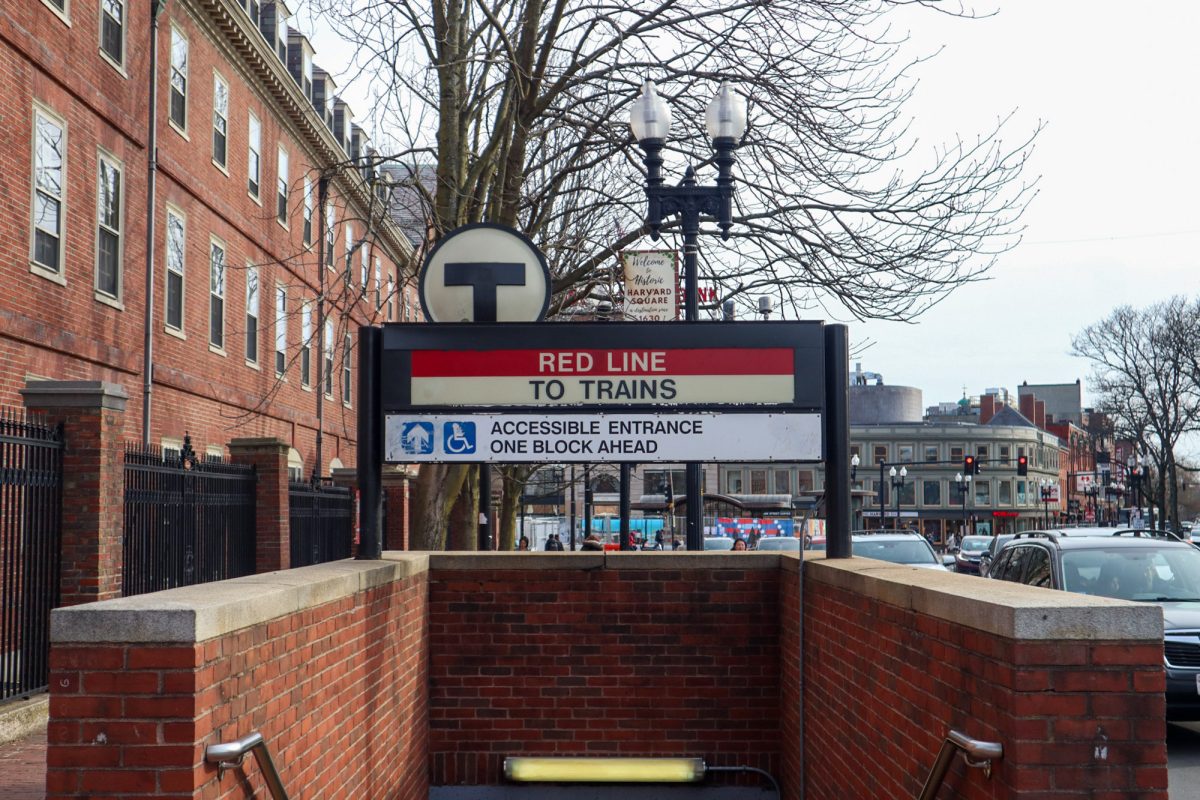One in six Americans spend their days in a classroom, putting them at risk of breathing in air pollutants — which are two to five times higher indoors than outdoors, according to the American Lung Association. A team of Boston University students is working to fix that.
Senior Primah Muwanga and junior Ellen Zheng, along with recent graduate Celine Chen and faculty advisor Thomas Little, won the 2025 Janetos Climate Action Prize in May for designing sensors that test air quality differences between buildings across BU’s Charles River Campus.
The Janetos Award originated as a tribute to recently deceased Earth and Environment Professor Tony Janetos, who led the creation of BU’s Climate Action Plan and Campus Climate Lab.
CCL, run by the Institute of Global Sustainability, in collaboration with BU Sustainability and the Office of Research, funds student research projects related to sustainability, aiming to deliver equitable solutions. Each year, the program recognizes students doing outstanding work through these projects.
This year’s winning group began their project about two years ago when Maribel Boujaoude and Yangyang Zhang — who both have since graduated — and Little piloted the project by deploying sensors around various classrooms.
Their goal at this point, Zheng said, was to see how viable the project was.
When Muwanga, Zheng and Chen joined the project, they then focused on improving the sensors.
“We were looking at, ‘How do we make the design smaller, how do we make it more efficient and how do we make it scalable?’” Zheng said.
In 2024, the group placed eight devices in eight different classrooms to collect data.
In the fall of 2025, they deployed a new miniature, low-cost version in 31 different classrooms within two buildings — the Photonics Center and the Engineering Product Innovation Center.
The devices read levels of PM2.5 — tiny particles composed of substances like dust and soot. PM2.5 can lead to respiratory and cardiovascular issues when inhaled deeply into the lungs, according to the Environmental Protection Agency.
The device also measures temperature, relative humidity and carbon dioxide levels. While temperature and humidity indicate the degree of satisfaction with the surrounding thermal environment, carbon dioxide measures the room’s ventilation quality, according to ScienceDirect.
From March to April, the team collected more than 30 million readings — data they then shared with BU Operations.
Indoor pollutants have been linked to lower academic performance, lower concentration and increased absenteeism, according to the ALA.
“If the air is not being refreshed as often, you’re more likely to get sick,” Muwanga said.
Zheng recalled getting a headache and having trouble breathing after being in a room with little ventilation during an engineering class.
“That is inherently a health hazard,” she said. “That’s something that doesn’t need to be the case. It can be changed.”
Michael Gevelber, the faculty director of CCL, said it is important to collect data on air pollution because it is an issue invisible to the naked eye.
Currently, Massachusetts only operates five stationary air quality sensors around the greater Boston area, according to the Massachusetts Department of Environmental Protection.
“Governments need to address it and create policies surrounding their plans for sustainability and environmental awareness,” Zheng said. “But, it’s also something that needs to be addressed on the individual scale. Every person has a responsibility to do their own part.”
Muwanga said this project is important for its versatility, as the sensors can be easily implemented into other buildings, such as dormitories.
Gevelber and representatives from BU Operations plan to meet in July to discuss implementing these devices across campus, expanding this project significantly.
However, he said a potential difficulty lies in making the device “easy to use” for those who are unfamiliar with the technology.
“The question now is now [that] they’ve developed this tool, how can they hand that off to the University, so the University can pick different buildings to measure air quality in and find problems?” Gevelber said. “All the rooms in the University really need to be examined.”
Zheng said she will continue advancing this project next year with the hopes of turning the data into “actionable insights” and collaborating more with facilities.
“We are really past due to take action. [The U.S. is] one of the largest emitters in the world,” Gevelber said. “We can’t just talk about it. We’ve got to take action.”




























































































